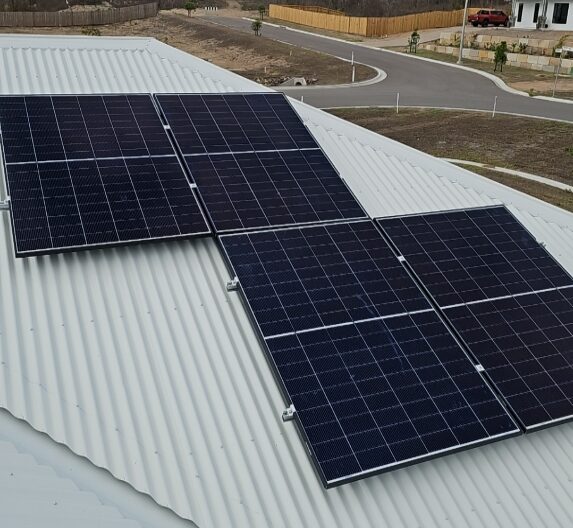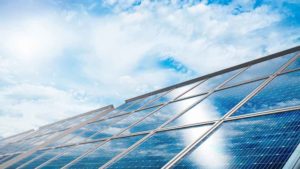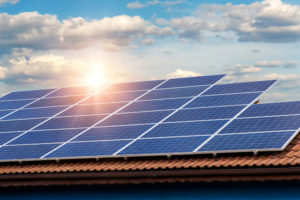Why Upgrading Your Solar System with O’Brien Electrical and Solar Matters
The energy landscape is changing rapidly. With the rise of renewable energy sources and increasing awareness of environmental issues, the need for efficient and reliable solar systems is more crucial than ever. Upgrading your solar system with O’Brien Electrical and Solar can significantly enhance your energy savings, reduce your carbon footprint, and ensure you are taking full advantage of the latest technological advancements.
Overview of the Evolving Energy Landscape
In recent years, the push towards renewable energy has gained significant momentum. Solar power, in particular, has become a key player in the transition to a more sustainable energy future. Governments and organizations worldwide are investing heavily in solar technology to reduce dependence on fossil fuels and mitigate climate change.
Importance of Efficient Solar Systems
An efficient solar system maximizes energy production and minimizes waste. This not only leads to substantial cost savings but also contributes to a more sustainable environment. Efficient systems reduce the need for additional power sources, decreasing greenhouse gas emissions and lowering your carbon footprint.
Benefits of Technological Advancements
The solar industry is continuously innovating. Newer panels are more efficient, durable, and aesthetically pleasing. Upgrading to modern panels can increase your energy output by up to 25%, making your system more effective and reliable. These advancements also come with enhanced features such as better resistance to weather conditions and longer lifespans.
Summary of Potential Energy Savings and Environmental Impact
By upgrading your solar system, you can significantly increase your energy savings. Modern solar panels and inverters are designed to optimize energy production, ensuring that you get the most out of your investment. Additionally, by producing more clean energy, you reduce your reliance on non-renewable energy sources, contributing to a healthier planet.
Key Indicators That Your Solar System Needs an Upgrade
Knowing when to upgrade your solar system is crucial to maintaining optimal performance and efficiency. Here are some key indicators that it might be time for an upgrade.
Declining Energy Output
One of the most apparent signs that it is time to upgrade your solar system is a noticeable drop in energy production. This could be due to aging panels, outdated inverters, or general wear and tear. Monitoring your system’s performance regularly can help you identify when it is underperforming.
- Signs and Symptoms of Reduced Energy Production
- Lower-than-expected electricity generation
- Frequent system shutdowns
- Inconsistent power supply
- Causes of Declining Output
- Aging solar panels losing efficiency
- Outdated inverters not converting power efficiently
- Accumulation of dirt and debris on panels
- Importance of Regular Performance Monitoring
- Helps detect issues early
- Ensures maximum energy production
- Extends the lifespan of your solar system
Technological Advancements
The solar industry is continuously innovating. Newer panels are more efficient, durable, and aesthetically pleasing. Upgrading to modern panels can increase your energy output by up to 25%, making your system more effective and reliable.
- Innovations in Solar Technology
- Higher efficiency solar cells
- Improved durability and weather resistance
- Advanced aesthetic designs
- Comparison of Old vs. New Panels
- Old panels: lower efficiency, less durable
- New panels: higher efficiency, more durable, better aesthetics
- Benefits of Upgrading to Modern Technology
- Increased energy production
- Enhanced reliability and longevity
- Better integration with smart home systems
Rising Energy Needs
If your energy consumption has increased due to home expansions, new appliances, or an electric vehicle, your existing solar system might not be sufficient. Upgrading ensures that your solar power system meets your current and future energy demands.
- Impact of Increased Energy Consumption
- Higher electricity bills
- Insufficient power supply
- Overloading the existing system
- Examples of Scenarios That Raise Energy Needs
- Adding new rooms or extensions to your home
- Installing energy-hungry appliances
- Purchasing an electric vehicle
- Ensuring Your System Meets Current and Future Demands
- Assess your current and projected energy needs
- Upgrade to a more powerful system
- Consider adding battery storage for extra capacity
Benefits of Upgrading Your Solar System
Upgrading your solar system comes with numerous benefits, from enhanced efficiency and performance to increased property value and environmental impact.
Enhanced Efficiency and Performance
Modern solar systems are designed to capture more sunlight and convert it into electricity more effectively, reducing your reliance on the grid and lowering your energy bills.
- How Modern Systems Capture More Sunlight
- Advanced solar cell technology
- Improved panel designs
- Optimized installation angles
- Reduction in Grid Reliance and Lower Energy Bills
- Higher energy production means less need for grid power
- Significant savings on electricity costs
- Potential to sell excess power back to the grid
- Real-Life Efficiency Improvement Examples
- Example 1: Upgrading from 15% to 20% efficient panels
- Example 2: Installing a new inverter with 98% efficiency
- Example 3: Adding a tracking system to optimize sun exposure
Increased Property Value
Homes with advanced solar systems are more attractive to buyers. An upgraded system can increase your property’s market value, making it a wise investment if you plan to sell in the future.
- The Appeal of Advanced Solar Systems to Buyers
- Lower energy bills are a strong selling point
- Modern, efficient systems are more attractive
- Environmentally conscious buyers prefer homes with renewable energy
- Financial Benefits of an Upgraded System
- Higher resale value of the property
- Faster sales due to the appeal of solar technology
- Potential for increased rental income
- Market Value Increase Case Studies
- Study 1: Property value increase of 4% after solar upgrade
- Study 2: Faster sales timeline for homes with upgraded systems
- Study 3: Higher rental income for solar-equipped properties
Better Monitoring and Maintenance
Modern solar systems come with sophisticated monitoring tools that allow you to track your energy production and consumption in real time. These tools can help you optimize your system’s performance and identify issues before they become major problems.
- Advanced Monitoring Tools for Real-Time Tracking
- Apps and software for monitoring energy production
- Alerts for potential issues or underperformance
- Integration with smart home systems for enhanced control
- Optimizing Performance and Identifying Issues Early
- Early detection of performance drops
- Timely maintenance to prevent major issues
- Better understanding of energy usage patterns
- Maintenance Tips for Prolonged System Life
- Regular cleaning of panels
- Periodic inspection of inverters and connections
- Timely replacement of aging components
Environmental Impact
Upgrading your solar system contributes to a greener planet. By increasing your renewable energy production, you reduce your carbon footprint and help combat climate change.
- Contribution to Renewable Energy Production
- More clean energy generation
- Reduced dependence on fossil fuels
- Positive impact on the energy grid
- Reducing Carbon Footprint
- Lower greenhouse gas emissions
- Decreased pollution levels
- Supporting global efforts to combat climate change
- Role in Combating Climate Change
- Promoting sustainable energy practices
- Encouraging others to adopt solar technology
- Contributing to a healthier planet for future generations
Steps to Upgrade Your Solar System
Upgrading your solar system involves several important steps to ensure you get the most out of your investment.
Assess Your Current System
Begin by evaluating the current state of your solar system. Check the condition of your panels, inverters, and battery storage. Determine if they are still performing optimally or if they are nearing the end of their lifespan.
- Evaluation Process for Panels, Inverters, and Storage
- Inspect panels for damage or wear
- Test inverters for efficiency
- Check battery storage capacity and health
- Identifying Optimal Performance or End-of-Life Components
- Performance metrics for panels and inverters
- Signs of wear or damage
- Battery performance indicators
- Importance of a Thorough Assessment
- Accurate understanding of system health
- Identifying areas for improvement
- Planning for upgrades based on assessment findings
Consult with O’Brien Electrical and Solar Experts
Work with a reputable solar company to assess your energy needs and the best upgrade options for your system. A professional can provide valuable insights and recommend the most suitable products and configurations.
- Finding Reputable Solar Companies
- Researching online reviews and ratings
- Seeking recommendations from trusted sources
- Checking credentials and certifications
- Energy Needs Assessment
- Analyzing current and future energy consumption
- Identifying energy goals and requirements
- Customizing solutions to fit specific needs
- Recommendations for Suitable Products and Configurations
- Suggesting the latest solar technology
- Tailoring system designs for optimal performance
- Providing cost-effective upgrade options
Explore Financing Options
Upgrading your solar system can be a significant investment. Look into various financing options such as solar loans, leases, and power purchase agreements (PPAs) to find one that fits your budget.
- Overview of Solar Loans, Leases, and PPAs
- Solar loans: financing the purchase of new components
- Leases: paying for the use of solar equipment over time
- PPAs: buying power generated by a solar system
- Comparing Financing Options
- Pros and cons of each financing method
- Cost analysis and long-term savings
- Flexibility and terms of agreements
- Finding a Budget-Friendly Solution
- Assessing financial eligibility
- Exploring incentives and rebates
- Choosing the best option for your financial situation
Plan the Installation
Once you have chosen your new components, plan the installation with your solar provider. Ensure minimal disruption to your daily routine and coordinate the process for a smooth transition.
- Choosing New Components
- Selecting the best panels, inverters, and batteries
- Ensuring compatibility with existing systems
- Considering future expansion possibilities
- Coordination with O’Brien Electrical and Solar
- Scheduling installation dates
- Ensuring timely delivery of components
- Preparing the site for installation
- Ensuring Minimal Disruption
- Planning for potential downtime
- Communicating with the installation team
- Making arrangements to minimize impact on daily activities
Monitor and Maintain
After upgrading, regularly monitor your system’s performance and schedule routine maintenance. This will help you maximize your investment and ensure long-term efficiency.
- Post-Upgrade Performance Monitoring
- Tracking energy production and consumption
- Using monitoring tools for real-time data
- Identifying any performance issues early
- Routine Maintenance Schedule
- Regular cleaning and inspection of panels
- Testing and servicing inverters
- Checking and maintaining battery storage
- Maximizing Investment and Long-Term Efficiency
- Proactive maintenance to prevent issues
- Optimizing system performance over time
- Ensuring the longevity of your solar system
Future-Proofing Your Solar Investment
To ensure your solar investment remains beneficial in the long term, consider these future-proofing strategies.
Invest in Battery Storage
Adding battery storage to your solar system allows you to store excess energy for use during cloudy days or at night. This increases your energy independence and provides a reliable backup during power outages.
- Benefits of Storing Excess Energy
- Utilization of surplus energy
- Reduced reliance on the grid
- Enhanced energy security
- Increased Energy Independence
- Ability to use stored energy anytime
- Reduced vulnerability to grid outages
- Improved self-sufficiency
- Backup Reliability During Outages
- Providing power during blackouts
- Ensuring continuous energy supply
- Peace of mind in emergencies
Stay Informed About Incentives
Government incentives and rebates for solar upgrades can significantly reduce your costs. Stay updated on available programs to take full advantage of these financial benefits.
- Government Incentives and Rebates Overview
- Types of incentives available
- Eligibility criteria
- Application process
- Staying Updated on Available Programs
- Monitoring government websites
- Subscribing to industry newsletters
- Consulting with solar experts
- Maximizing Financial Benefits
- Applying for all eligible incentives
- Reducing upfront costs
- Increasing return on investment
Consider Energy Management Systems
Advanced energy management systems can help you optimize your energy usage, reduce waste, and increase savings. These systems integrate with your solar setup and provide insights into your consumption patterns.
- Advantages of Advanced Energy Management
- Real-time monitoring of energy usage
- Identifying areas for efficiency improvements
- Reducing energy waste
- Integration with Solar Setups
- Seamless compatibility with solar systems
- Enhanced control over energy production and consumption
- Improved system performance
- Insights into Consumption Patterns and Optimizing Usage
- Detailed data on energy use
- Recommendations for energy savings
- Improved energy efficiency
Conclusion
Upgrading your solar system with O’Brien Electrical and Solar is a smart move that offers numerous benefits, from enhanced efficiency and performance to increased property value and environmental impact. By staying informed and working with experienced professionals, you can ensure your solar investment continues to meet your energy needs and supports a sustainable future.
FAQs
What are the signs that my solar system needs an upgrade?
Signs include declining energy output, aging panels, and outdated inverters. Regular monitoring can help identify underperformance.
How do I find a reputable solar company for consultation?
Research online reviews, seek recommendations, and check credentials and certifications to find a trustworthy solar company.
What financing options are available for solar upgrades?
Options include solar loans, leases, and power purchase agreements (PPAs). Each has its pros and cons, so compare them to find the best fit for your budget.
How does battery storage improve my solar system?
Battery storage allows you to store excess energy for use during cloudy days or at night, increasing your energy independence and providing backup during outages.
What government incentives are available for solar upgrades?
Incentives vary by location but may include tax credits, rebates, and grants. Stay updated on available programs to maximize your financial benefits.






